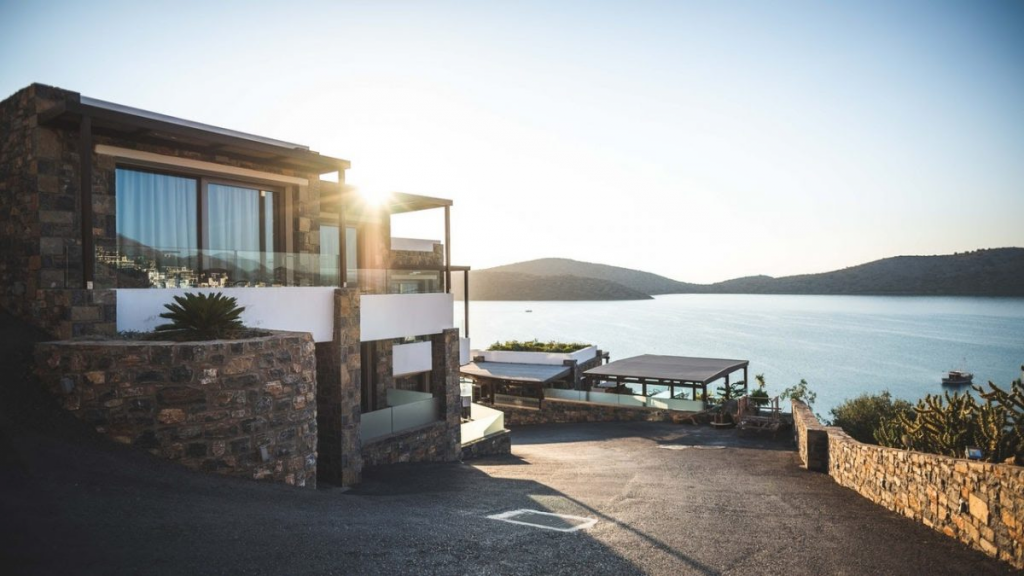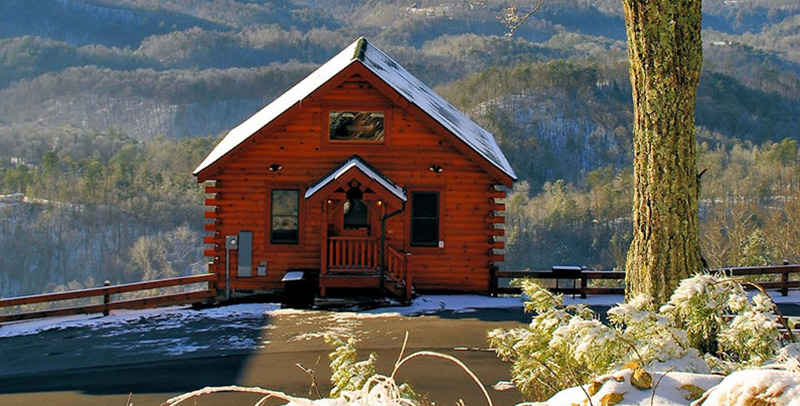As we navigate the post-pandemic landscape, short-term rental market analysis shows that the demand for vacation rentals has undergone significant shifts. The shifts reflect changes in traveler behavior, preferences, and the broader economic climate.
Thank you for reading this post, don't forget to subscribe!With the world slowly but surely finding its feet after the upheaval of the past few years, the short-term rental industry stands at a crossroads, offering both challenges and opportunities for investors and property owners.
The journey from the height of the pandemic to today has been marked by remarkable resilience within the short-term rental sector. Initially faced with unprecedented cancellations and travel restrictions, the industry has since rebounded, driven by a surge in domestic travel, the rise of “workations,” and a growing preference for private accommodations over traditional hotels.
The latest data points towards a robust recovery, with occupancy rates, average daily rates (ADRs), and revenue per available room (RevPAR) all trending upwards. This rebound is a testament to the sector’s durability, adaptability, and evolving preferences of travelers seeking safe, flexible, and unique lodging options in a post-pandemic world.

Table of Contents
ToggleIs there a market for short-term rentals?
Yes! As we get into the short-term rental market analysis, it’s crucial to consider these evolving dynamics alongside economic indicators and consumer trends. The appetite for travel is undeniably back, but it comes with new expectations for health, safety, and the nature of travel experiences.
Understanding these trends is key to successfully navigating the current market landscape for investors and property owners. The question remains: Is it a good time for vacation rentals? The following sections will explore this question in depth, examining the data, trends, and forecasts that define the short-term rental market today.
That said, as travelers continue to avoid busy urban centers and prefer heading out to more secluded and quiet destinations, the supremacy of multifamily buildings is starting to waver.
Therefore, it’s fair to assume that property managers might fare better by looking at more remote, beauty spot properties. They can even consider smaller, on-the-rise tourist hotspots.

The most significant short-term rental trends
As demand for these types of short-term rentals continues to rise, investors must adapt to the rapidly changing trends in the industry and use them to their advantage. They need to provide the ultimate vacation rental experience their guests are looking for and lock in the high returns this industry is so well-known for offering.
A study on travel and living was published by the short-term rental booking site Airbnb at the end of the previous year. The study discovered that the COVID-19 pandemic’s social impacts have made it harder to distinguish between living and traveling.
People now travel whenever they want and book short-term rentals rather than only taking vacations on the weekends or holidays. And instead of traveling to the locations they used to frequently visit, they are visiting new areas.
Following the impact the COVID-19 pandemic has had on the tourism sector, here are some of the biggest trends you can expect in the vacation rental market going forward.
Increased focus on frictionless stays
One of the biggest trends of the pandemic is that guests prefer tech-facilitated, contactless stays over more personal human experiences.
Short-term rental owners are now embracing the benefits of technology to meet the demand for a more frictionless stay. They provide keyless entry, comprehensive guide books on arrival, and constant digital communication opportunities to interact with guests and answer their questions. If social media was important before, it is now considered essential to ensure your guests feel well cared for without in-person contact.
Short-Term Rentals in Natural Environments are Increasingly Popular
Before the COVID-19 pandemic, 10% of short-term rental reservations were made in rural areas, 13% in mountainous areas, and 34% in coastal regions. Bookings in the above-mentioned areas rose to 18%, 42%, and 22%, respectively, in the summer of 2023. These regions had the best short-term rental markets.
More long-term opportunities
The drop in demand and occupancy rates following the pandemic means that many short-term rental owners have had to find creative ways to adapt and make profits.
As a result, encouraging long-term or even longer short-term stays has become one of the leading strategies across Airbnb and other short-term rental listings. In addition, some property owners have started to enter flexible partnerships with traditional real estate agencies and professionals. These partnerships allow them to take over the property during the low season and rent it out to long-term tenants or “work-from-home” travelers.
Search for a hotel-like experience
Following the increased need for a frictionless, tech-driven, and more impersonal stay, travelers are also increasingly looking for a more hotel-like experience. This means that a solid social media presence, sleek branding, and exceptional service standards are slowly becoming the norm.
This might be due to the desire to truly switch off and enjoy a hotel-like experience without the contact risks associated with staying at a hotel.

It might also just be an organic trend stemming from the growth of the short-term rental market and its increasing popularity.
Whatever the reason, it’s worth reviewing your current social media strategy and branding to ensure you can capture this growing audience. You should revise your service options or property design to ensure your short-term rental can keep up with these new expectations.
How do you analyze short-term rental properties?
So, how can you make sure to capitalize on these trends to your advantage this year? Knowing what to deliver is only the first part of the process. The rest will be learning how to evaluate a tremendous market opportunity.
Current trends seem to have left bustling urban centers and internationally-renowned destinations behind. Many more factors go into analyzing the viability of the location, neighborhood, and accommodation style you’ve been eyeing.

Consider your target market
You should first evaluate your target market and how your desired guests will fit into the location and type of home you want to invest in.
Millennials, for example, prefer unusual accommodation and vacation rentals with a personality, whether they’re in the heart of the big city or staying in a remote cabin.
Millennials are unlikely to prefer a hotel-like experience but rather the small-scale feel of an independently-owned business. They will often look for plenty of Instagram photo opportunities when staying somewhere new.
On the other hand, beach lovers of an older demographic might prefer luxury-style accommodation and hotel-like convenience when looking for their next getaway. They might be looking for beautiful, quiet accommodation close to the beach and be prepared to pay top dollar for a convenient location. Whatever target market you’re trying to attract with your investment choices and marketing, make sure it’s something you keep in mind when making your final decision!
Understand the local economy

After figuring out what kind of demographic you’re trying to reach with your investment, your next step will be to get in touch with an experienced local realtor. They’ll be able to give you all the insights you need to understand the local economy.
This will include getting familiar with the average cost of living, the amenities available, the best neighborhoods, and the projected state of the local economy for the years ahead.
This is also where you’ll evaluate the viability of your chosen location in terms of tourist appeal. Check the figures to see how many people visit the area during high and low seasons. Ensure that your property ticks all the boxes tourists will be looking for.
You’ll also want to ensure your new property is conveniently located close to public transport and popular attractions, including beauty spots, restaurants, and shops.
Dive into real estate market analysis

Consulting local realtors and making an educated guess on the state of the real estate market in your chosen location can only go so far. The most accurate method for rental market analysis is to dive deep into the numbers in the real estate market and come up with your own conclusions.
Suppose you’re looking for the best place to start evaluating your options. In that case, you should look no further than our handy directory. We will help you discover all the best rental property investment opportunities available and set you up for a more significant cash flow. With our guidance, you’ll understand what making it in this industry is all about and gain valuable insights. Get in touch today to get the journey started!
Where Is The Best Short-Term Rental Market for Real Estate Investors?
Location is the most significant deciding factor in making your next short-term rental investment either a success or a flop. So, where in the country should you focus your attention to ensure your investment strategy gives you excellent properties with the best rental income?
Note that the exact answer will depend on your target real estate market and budget. Here are some of the most critical short-term rental markets you should keep an eye on.

Chattanooga, Tennessee
Chattanooga is located along the Tennessee River in the shadows of the Appalachian Mountains. It offers a promising investment opportunity. The Lookout Mountain Incline Railway takes visitors to historical buildings and trails with breathtaking vistas.
- Annual revenue potential: $47,000
- Revenue growth rating: 78
- Rental demand rating: 98
- Investability rating: 88
- Investor score: 88
Sevierville, Tennessee
Overlooking the majestic Smoky Mountains, Dolly Parton’s hometown can offer travelers the break of a lifetime. It’s also wildly popular all year-round among great-outdoors enthusiasts.
- Annual revenue potential: $61,961
- Revenue growth rating: 65
- Rental demand rating: 71
- Investability rating: 100
- Investor score: 83.9
Maui, Hawaii
Maui was the best Airbnb investment destination thanks to high occupancy, strong income growth, and high investability. The Valley Isle is well-known for its world-famous beaches, humpback whale sightings, and stunning views during the golden hour.
- Annual revenue potential: $102,000
- Revenue growth rating: 90
- Rental demand rating: 93
- Investability rating: 91
- Investor score: 90
Kenai Peninsula, Alaska
The Kenai Peninsula provides access to numerous national parks, wildlife viewing opportunities, and Alaska’s genuine awe and beauty. Since the pandemic, there has been a spike in interest in outdoor adventure. Therefore it’s not surprising that the region’s revenue growth has achieved a score of 94.
- Annual revenue potential: $44,000
- Revenue growth rating: 94
- Rental demand rating: 89
- Investability rating: 87
- Investor score: 89
Gatlinburg, Tennessee
The Great Smokies are a sight to behold all year round. Getting a secluded cabin on their doorstep will guarantee great occupancy rates.
- Annual revenue potential: $55,439
- Revenue growth rating: 56
- Rental demand rating: 70
- Investability rating: 100
- Investor score: 81.6

Your one-stop destination for understanding the vacation rental market
So, are you ready to dive into the short-term rental industry and invest in your new (or next) rental property?
There’s no point in denying that the tourism and short-term rental industry has felt the full impact of the pandemic. As travel resumes and the world starts to open up more, the already incredible investment opportunities available will quickly become even more profitable.
In short, there’s never been a better time to get in early and turn your next investment property into a successful short-term rental.
Take The Next Step
Suppose you’re looking for the best place to start evaluating your options. In that case, you should look no further than our handy directory. We will help you discover all the best rental property investment opportunities available and set you up for a more significant cash flow. With our guidance, you’ll understand what making it in this industry is all about and gain valuable insights. Get in touch today to get the journey started!
Investor Questions About Short-Term Rental Market Analysis
Analyzing a short-term rental market involves examining several key factors, including demand and supply dynamics, average daily rates (ADRs), occupancy rates, seasonal trends, and regulatory environment.
Effective analysis also includes understanding the competitive landscape, particularly Airbnb rentals and Airbnb vs. Vrbo, to gauge market saturation and identify opportunities for differentiation.
Tools like market analyzers and data platforms can provide valuable insights into these metrics, helping investors and property managers make informed decisions.
As of my last update, AirDNA is widely regarded as one of the best short-term rental market analyzers. It offers comprehensive data on Airbnb rentals and Vrbo listings, including occupancy rates, ADRs, and revenue insights.
AirDNA’s platform is designed to assist users in performing detailed short-term rental market analysis, making it a valuable resource for investors looking to understand market trends and identify investment opportunities.
The Compound Annual Growth Rate (CAGR) for short-term rental markets can vary widely by region and market conditions. As of my last update, the global short-term rental market was experiencing significant growth, driven by increasing demand for vacation rentals and the expansion of platforms like Airbnb and Vrbo. However, specific CAGR figures would require access to the latest market research reports or financial analyses for precise data.
Analyzing a market on Airbnb involves studying the platform’s supply and demand trends, pricing strategies, guest reviews, and the diversity of listings in a specific area. Tools like AirDNA can provide in-depth analytics specifically for Airbnb rentals, offering insights into occupancy rates, seasonal trends, and competitive analysis. Understanding these factors is crucial for optimizing listing performance and pricing strategies on Airbnb.
AirDNA is considered highly accurate for short-term rental market analysis, as it aggregates and analyzes data directly from Airbnb and Vrbo listings. It uses sophisticated algorithms to provide market trends, investment insights, and operational benchmarks. However, like any data-driven tool, its accuracy can be influenced by the completeness and timeliness of the data it collects.
AirDNA offers both free and paid subscription options. The free version provides basic market insights and data, which can be useful for preliminary analysis. For more detailed and comprehensive data, including historical trends and market comparisons, AirDNA’s paid subscriptions offer a range of tools and analytics designed for deeper short-term rental market analysis.
BNB Calc, or similar calculators designed for Airbnb and short-term rental investments, provides estimates on potential rental income, occupancy rates, and other financial metrics based on available market data. While these tools can offer valuable insights, their accuracy depends on the quality and recency of the data they use. Users should consider them as one of many resources in making investment decisions.
While specific strategies can evolve, Airbnb’s approach is likely to focus on enhancing user experience, expanding its listings portfolio, incorporating advanced technology for personalized travel experiences, and addressing regulatory challenges across its markets. The strategy may also emphasize sustainability and community engagement, aligning with broader trends in the short-term rental market.
